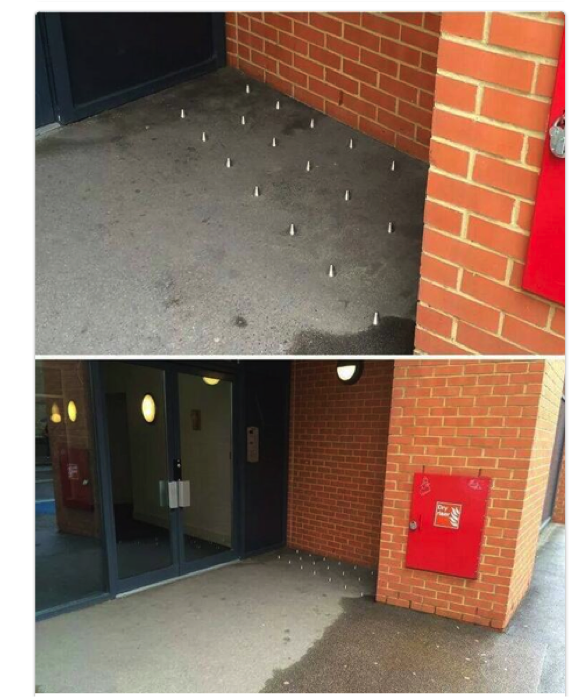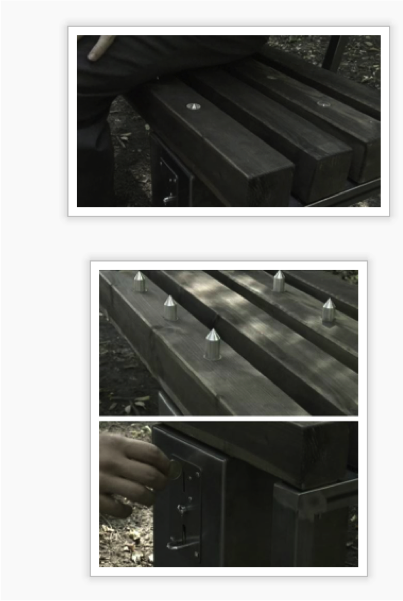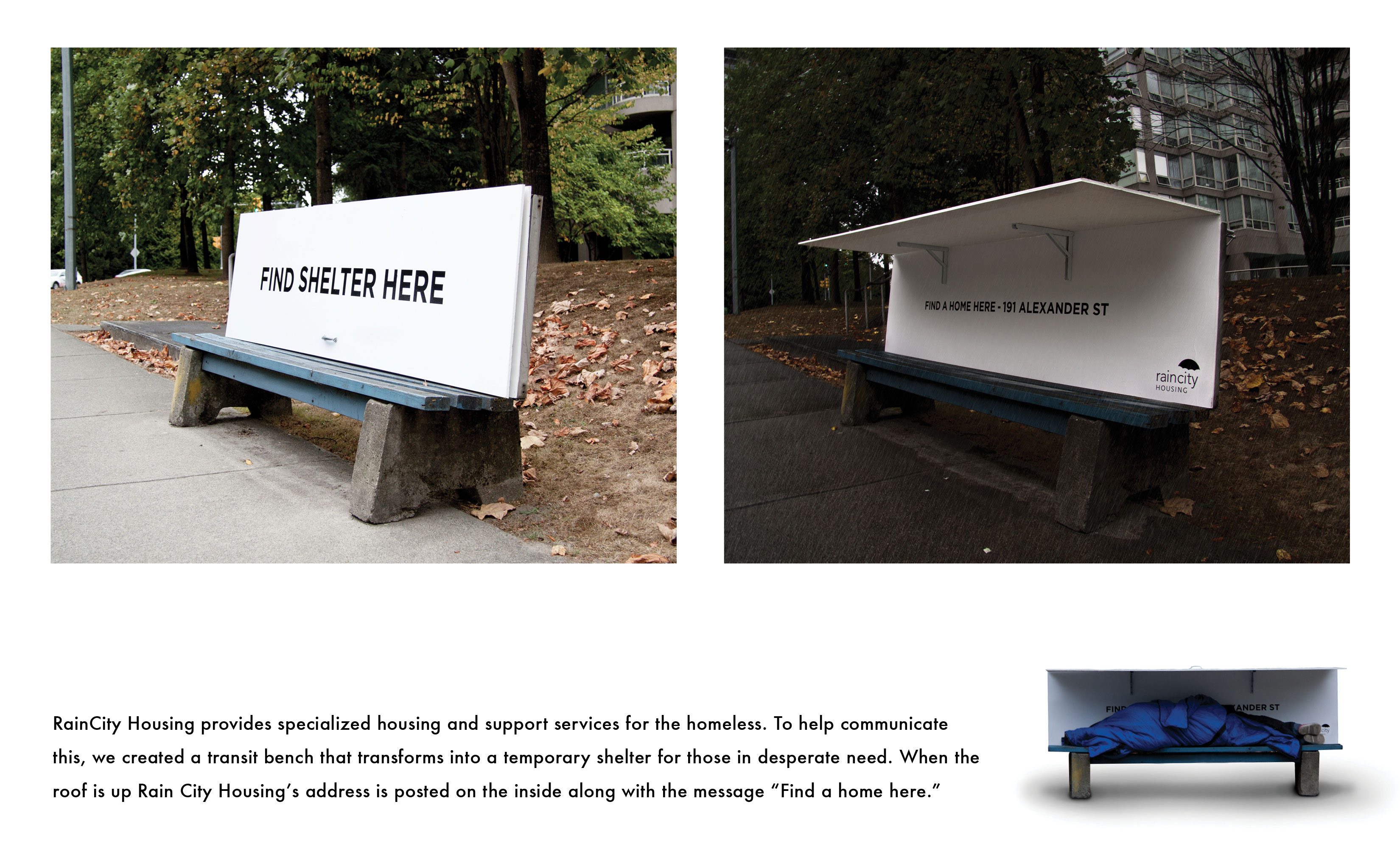Big news this week has been the installation of spikes outside a new luxury housing complex in Southwark (south central London) England, assumedly in response to a homeless person who had been sleeping there a few weeks ago. Pictures and commentary about the spikes spread quickly through Twitter, Facebook and other social media. 
My friend Rev. Jim Houston said, “The really amazing part of the story is the widespread uproar on behalf of the homeless against the use of ‘defensive architecture’”. Defensive or “disciplinary architecture” often arises because communities (businesses, residents, police etc.) are complaining about the use of public spaces by people they deem to be nuisances. It is this line of thinking that often leads to laws that criminalize people experiencing homelessness through ticketing, use of space bylaws (no sleeping in parks, panhandling rules) or even the crackdown on feeding people who are hungry. The reaction, as Jim points out, to the spikes in London is unusual because rather than the usual anti-homeless NIMBY-ism so many people are protesting and claiming that it is invasive and inhumane (a common refrain is that it is very similar to anti-pigeon techniques).
Defensive or disciplinary architecture includes any type of built structure that aims to exclude certain uses or certain groups of people from using that structure. For example, designing benches that feature steep slopes (you can lean against them to rest but can’t actually sit), benches with dividers that prevent sleeping and very narrow bus shelter seats. Other techniques include blasting loud noises all night long in areas where people experiencing homelessness gather or continually washing down window ledges, sidewalks, benches etc. These techniques are also used to prevent skateboarders from using public spaces.
 Spikes aren’t new. They’re outside stores and businesses.
Spikes aren’t new. They’re outside stores and businesses.
Exploring a little further through the internet led me to find concrete spikes under an overpass and even an idea for a pay-for-use bench – spikes are there unless you feed some money in to get them to disappear. I’d hate to lose track of time in a good book; it’d be a pain in the posterior!
Jokes aside, these spikes speak to a larger issue: How do housed and homeless people sleeping rough share space in society?
We love the benches designed by Spring Advertising for RainCity Housing several months ago. They do a great job at drawing attention to the issue.
One is a bench that converts into a shelter (way more useful than spikes). The other uses glow in the dark paint to portray different messages at night or during the day.
Street art depicting Christ as a homeless person by artist Timothy P. Schmalz has also raised controversy. A bronze statue of Jesus asleep on a bench was rejected by various churches in Toronto and New York before finding a home at Regis College, although a wooden version of the same statue was well received by Pope Francis at the Vatican. The same statue raised controversy in Davidson, North Carolina when it was placed outside St. Alban’s Episcopal Church. Neighbour Jerry Dawson said in a letter to the editor:
My complaint is not about the art-worthiness or the meaning behind the sculpture. It is about people driving into our beautiful, reasonably upscale neighborhood and seeing an ugly homeless person sleeping on a park bench. It is also about walking by this sculpture at night and passing within inches of the grim reaper. These are the impressions that this sculpture gives. I have stepped over actual homeless people sleeping on a sidewalk in New York City and not been as creeped out as I am walking past this sculpture.
I’ll let that letter speak for itself.
But if that is the reaction to a statue it’s not surprising to see Southwark’s response to an actual homeless person. NIMBY-ism is alive and well. It’s up to all of us to speak up and speak out. If we don’t want to see homeless people in public spaces then we need to work to end homelessness; they’d rather have their own place to go to too. Create more affordable housing (either build new housing or provide rent supplements). Develop programming that supports the needs of someone moving into housing (especially for Housing First programs). Don’t penalize or criminalize people for being homeless. Improve discharge planning from hospitals or correctional facilities. Support youth aging out of care/child welfare.
Photo credits: Andrew Horton/Worldview Media, Geekosystem, Spring Advertising.


